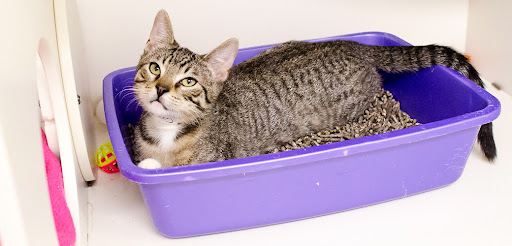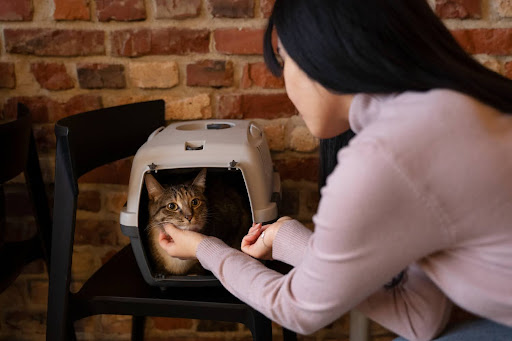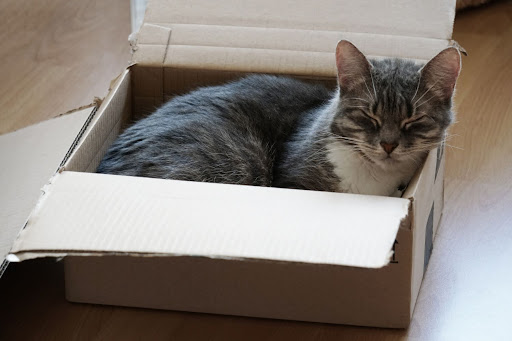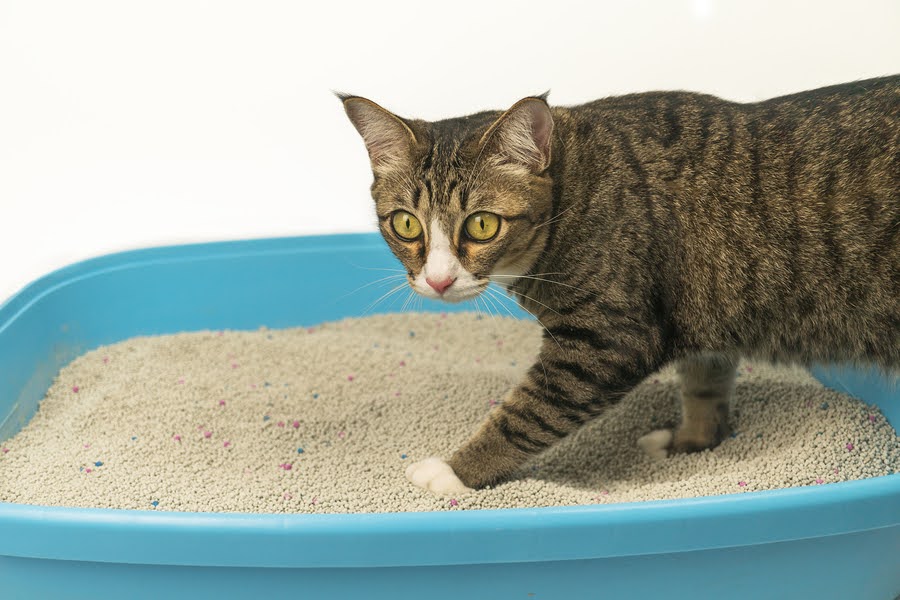Cats are creatures of habit, they like things to be a certain way. It is especially true for their litter box, which is their own and private space. But when it comes to changing their litter box, it can be a stressful and challenging experience for both you and your cat.
Whether you want to move to a new litter box because of your cat’s health, comfort, or preferences, or because of your convenience, preferences, or values, you need to do it carefully and slowly.
Otherwise, you may end up with a messy fur baby who refuses to use the new box or trade them elsewhere.
But don’t worry, we’re here to help. In this guide, we’ll share some practical and effective tips and tricks on introducing your cat to a new litter box, how to avoid common mistakes and problems that arise during transitions, and what to do after completing transition.
By following these steps, you’ll be able to make the transition as smooth and easy as possible for both you and your cat. Let’s start!
Old To New: When Switching Litter Become Necessary
There are some situations where changing litter can be good or even needed for your cat’s well-being. Here are some of the common reasons why you might think about changing cat’s litter.
Health Recommendation from Vet
When your veterinarian suggests a change in your cat’s litter for health reasons, it’s wise to heed their advice. Certain litter ingredients, such as fragrances, dyes, or dust, might trigger allergies or irritations in some cats.
Your vet might recommend hypoallergenic, dust-free, or natural alternatives, ensuring a safer and more comfortable experience for your feline companion.
Cat’s Litter Preferences or Frustration
If your cat seems dissatisfied with their current litter, they won’t hesitate to express it. Signs of litter frustration, like excessive scratching, digging, or even choosing alternative spots for their business, are red flags.
This behavior suggests a potential dislike for the litter’s texture, scent, or composition. Experimenting with various types, such as unscented, fine-grained, or natural litters, might uncover your cat’s preferred choice.
Medical Needs or Toileting Changes
Cats with specific medical conditions may require tailored litter solutions. For instance, urinary tract infections, bladder stones, or kidney issues might demand a switch to litter designed for monitoring pH levels or reducing stress.
Cats with arthritis or mobility problems might benefit from a litter box with low-entry, high-sided, or covered designs, catering to their unique preferences and needs.
Seeking Convenience and Efficiency
If convenience is your mantra, consider a litter that makes your life easier. Lighter weight, clumping, or self-cleaning options can simplify lifting, carrying, scooping, and cleaning tasks.
Opting for litters with superior odor control, reduced tracking, or minimal dust can contribute to a cleaner and fresher home environment. Choose a litter that aligns with both your needs and your cat’s approval.
Odor Control and New Pet Introduction
Introducing a new pet or aiming to enhance odor control calls for strategic litter choices. Some litters boast odor eliminators like baking soda or charcoal, neutralizing unpleasant smells. Others incorporate scents like lavender or citrus to mask odors and infuse a pleasant aroma.
However, exercise caution – avoid overly strong or artificial scents that might irk your cat. Gradual and gentle introduction of the new litter, especially in the presence of a new pet, ensures a smoother transition in what can be a stress-inducing situation for your feline friend.
Factors To Consider: Make Litter-Transition Right Before Introduce To Your Cat
Changing a cat’s litter needs careful thinking. It’s not just about changing materials; it’s about making cat-happy at which factors you should consider before showing the new litter to your cat king or queen:

Choosing the Right Litter and Box Type
Making a good litter change needs careful picking of both litter and box type. Think about the size, entry style, and material of the box, making sure it matches well with your cat’s likes. The right mix makes the chance of a smooth change better, keeping your cat happy and comfy.
Even studies have found that most cats like fine-grained litters more because they are gentler on their paws. Newer, higher-quality scoopable litters often have smaller grains than the usual clay litter.
Opt for a Clumping Litter
In the world of cat-like litters, clumping is the best. Though some non-clumping litter that tries to lower dust and best for less scooping.
But in the starting, go for a clumping litter as it makes the cleaning process easier and cleaner. This can save you time and hassle in cleaning the litter box, which can make you and your cat less stressed.
Skip Scented Litter Initially
Cats have good noses, and showing them a new smell might make them doubt. Moreover, some felines don’t like the smell of scented or deodorant litter. In the first steps of change, go for no-smell litter to let your cat get used to it without too much smell.
Also, don’t put a room deodorizer or air freshener close to the litter box. A little baking soda on the bottom of the box will take away odors without pushing your cat away. Once they’ve liked the new setup, you can think about showing softly smelly options.
Hooded or Unhooded?
To hood or not to hood – that is the question. The talk over a hooded or non hooded litter box is an old puzzle. Some cats like the privacy of a hood, while others like the freedom of an open design.
Watch your cat’s behavior to find out which option fits their royal likes. But I will recommend you to use a non-hooded litter box first.
Changes to the Living Space
The place plays a big role in your cat’s liking of change. Before the big show of the new litter, think about making any needed changes to the living space. For example, if your cat poops or pees outside the litter box, you may need to change some things in the house to lower the risk of your cat touching other items.
It can mean cleaning the place your cat does its business, spending less time with your cat in these places, and changing the litter box if needed.
However, find a good place for the litter box, making sure it’s easy to get to and a nice place. Making a cat-happy place sets the place for a good change.
Cat Care 101: How Do You Introduce a New Litter Box to a Cat?
Alright, litter-box warriors, you’ve chosen wisely! The new porcelain palace awaits, but how do you ensure your feline overlord welcomes it with regal purrs instead of disdainful hisses?

Fear not, for we’re about to unleash the paw-erful secrets of a smooth transition:
Step 1: Gradual Transition Is Key
Don’t expect your cat to waltz into a completely alien box overnight. Instead, introduce the new litter box gradually and gently, giving your cat time to adjust and get used to it.
Step 2: Keep Both Old & New Box In Same Place
Don’t throw away the old litter box as soon as you bring in the new one. Keep both boxes in the same spot! Let your kitty explore the new digs at their own pace, knowing the safe haven of the old box is just a whisker away.
Step 3: Make New One Appealing
Being tidy creatures, cats prefer to use a litter box that is neat and fresh. Keep the new box well-stocked with clean cat litter, while letting the old one get a bit dirtier.
Your cat will be less tempted by the old box, just like we humans avoid filthy toilets. Even if the new box is unfamiliar, your cat will likely pick it over the old one if it is cleaner.
Step 4: Adding Familiar Scent
Cats rely on smells a lot. Sprinkle some old cat litter over the new box’s contents to make it smell like home. This cozy smell can encourage your cat to try out the new litter box. But don’t add too much, or it will get dirty quickly. If you want to transition to a covered litter box, you can follow this strategy.
Step 5: Positive Reinforcement
So, is your cat using the new box? Unleash the catnip confetti! Shower them with praise, pets, and maybe even a delectable tuna bonus. Positive reinforcement is key to unlocking their purr-sitive feelings about the new digs.
Step 6: Monitor If Your Cat Is Happy
Keep an eye on their bathroom habits. Are cats not using the new litter box or avoiding altogether? No need to panic! Offer more incentives, clean both boxes regularly, and consult your vet if they seem truly distressed.
Step 7: Patience and Persistence
Remember, Rome wasn’t built in a day, and neither is a cat’s bathroom routine. Stick with the process, adjust your approach if needed, and trust that with patience and persistence, your kitty will embrace their new porcelain palace.
Bonus Tip: Blend The Litter
Blending the litter – can be one of the indefeasible ways for you! As your cat gets comfortable, gradually mix small amounts of the new litter with the old in their familiar box. Start by mixing 75% of the old litter with 25% of the new litter, and fill the new litter box with this mix.
Gradually replace the old litter with the new one. Every few days, add 25% more of the new litter until it’s all new.
What To Do If Cats Start Avoiding the Litter Box?
Cats are creatures of habits, but when they start avoiding the litter box, it’s time for some strategic troubleshooting. Here’s guide to recovering litter box harmony:

Option 1: Rule Out Medical Issues
First and foremost, a cat’s sudden aversion to the litter box might signal an underlying health concern. Consult your vet to rule out any medical issues that could be causing discomfort during toileting. Addressing health concerns lays the foundation for a successful resolution.
Option 2: Address Potential Stressors
Cats are sensitive beings, and stress can manifest in unexpected ways, including litter box avoidance. Evaluate your cat’s environment for potential stressors – changes in routine, new pets, or even rearrange furniture. Identifying and alleviating stressors can often resolve why cats won’t use the litter box.
Option 3: Check For Litter Box Issue
Inspect the litter box itself. Sometimes it’s not the cat, it’s the box. Cats can be picky about their bathroom setup. Ensure the box is the right size, with an entry that suits your cat’s preferences. Experimenting with different litter types and textures might also uncover your cat’s preferred choice.
Option 4: Ensure Litter Box Cleanliness
Cats are very particular about cleanliness, and a filthy litter box may be a huge turn-off. Maintain a consistent cleaning routine by scooping trash every day and changing the litter on a regular basis. A tidy litter box is more likely to convince your cat to use it properly again.
Option 5: Multiple Cat – Multiple Litter Box
In households with multiple cats, occupants, sharing a single litter box can lead to territorial issues. Introducing multiple litter boxes, strategically placed throughout your home, provides each cat with a personal restroom sanctuary. This reduces competition and encourages a peaceful bathroom routine.
But remember these 3 things-
- Have one litter box per cat, plus one extra.
- Use the same type of litter and litter box for all the boxes.
- Keep all the litter boxes clean and accessible.
Purr-Fect Tips To Maintain New Litter Set-Up
So, you’ve conquered the transition, and your feline friend is proudly claiming their new litter box. But the journey doesn’t end there! To keep the purrs flowing and the odor out the door, a little maintenance is key.
I’m giving you three tips to make your new litter box nice and cozy for your cat:
Tip 1: Regular Scoop Out the Waste
The golden rule of litter maintenance – scoop, scoop, scoop! Make it a habit to remove waste from the litter box daily. This not only maintains the space clean, but it also provides a perfect environment for your cat’s daily routines.
Tip 2: Dispose Old Litter and Renew
Say goodbye to the old and embrace the new. Dispose of old litter on a regular basis and replace it with a new batch. Your cat will appreciate the clean slate, and you will enjoy a consistently attractive restroom environment.
Tip 3: Deep Clean the Litter Box
Give your litter box a spa day!
To ensure maximum cleanliness, perform a deep cleaning on a regular basis. Before refilling the litter box, empty it, scrub it with a cat-friendly cleaner, and let it dry fully. This extra step ensures a dazzling environment for your discriminating kitty companion.
Try These Self Cleaning Litter Box or Litter Robot
Check out these fantastic litter robot for self cleaning your cat’s waste, and give yourself a break-
Best Overall:
- Whisker Litter-Robot 4: This model ticks most boxes with its automatic scooping, spacious design, odor control, smartphone app, and multi-cat compatibility. Its high price tag, costing $699.
Best Value:
- PetSafe ScoopFree Complete Plus: This automatic litter box offers easy-to-use operation, affordability, and decent odor control. However, its smaller size might not be ideal for large cats and frequent scooping might be needed. It’s the cheapest model, and will cost $200.
Best for Multiple Cats:
- Petkit PuraMax Self Cleaning Cat Litter Box: This spacious option suits a multi-cat household with its efficient automatic scooping system and large capacity. It’s app connectivity and will cost $570.
Best for Technology and Features:
- Smarty Pear Leo’s Loo Too: This Wi-Fi enabled litter robot features automatic scooping, health monitoring, and customizable settings through a smartphone app. Its high price tag, around $600–$700.
FAQ
Why cat acting weird with the new litter box
Your cat’s strange behavior may stem from adjusting to the unfamiliarity of the new litter box. So, giving them proper time to adjust can solve the issue.
Is it normal for my cat to be hesitant?
Absolutely! Cats are creatures of habit, and a new litter box might cause hesitation. However, if your cat is excessively hesitant or fearful, it could be a sign of anxiety or a behavior problem that needs to be addressed.
How long does it take for cats to get used to a new litter box?
Some cats may start using the new litter box in a few days, while others may take a week to adjust. But if they trained before then it won’t take too long to adjust.
Enclosure Of Litter-Switching
This guide will give you a general idea and the best tips on how to switch your cat’s litter box without any trouble, so you and your cat can have a clean and cozy litter box.
It’s not easy to change your cat’s habits, but with some patience and planning, you can do it. Don’t forget to ask a vet for help if you need it and always put your cat’s needs first.
We hope you found this guide helpful and informative. If you have any questions, comments, or feedback, please let us know in the comment section below. We would love to hear from you and learn from your experience.

